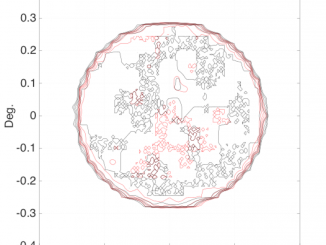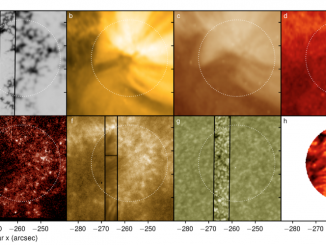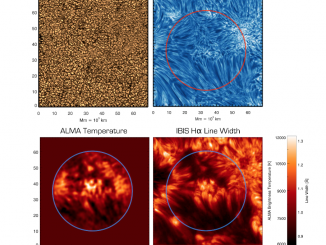Subarcsecond imaging of a solar active region filament with ALMA and IRIS
by da Silva Santos et al.*
Filaments (or prominences) are “clouds” of cool (<104 K) material suspended in the solar corona by up to tens of megameters above the photosphere, and they can be broadly divided into quiescent filaments and active region (AR) filaments. Although both of these structures have been observed for a long time, particularly in recent years by NASA’s IRIS telescope, there are open questions on the magnetic topology of filaments and the […]








